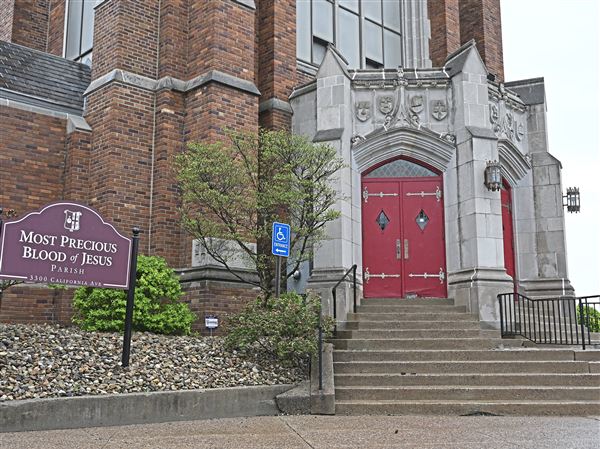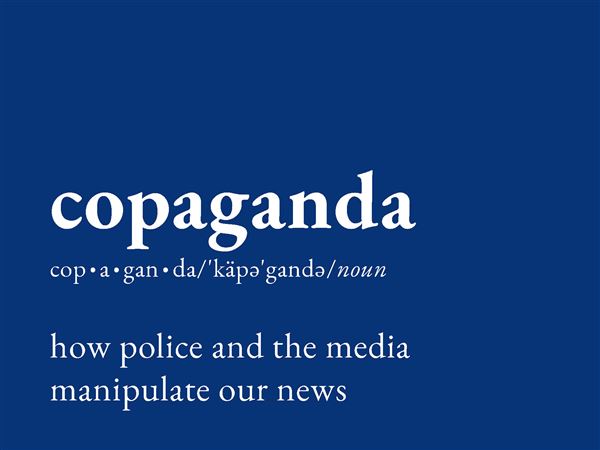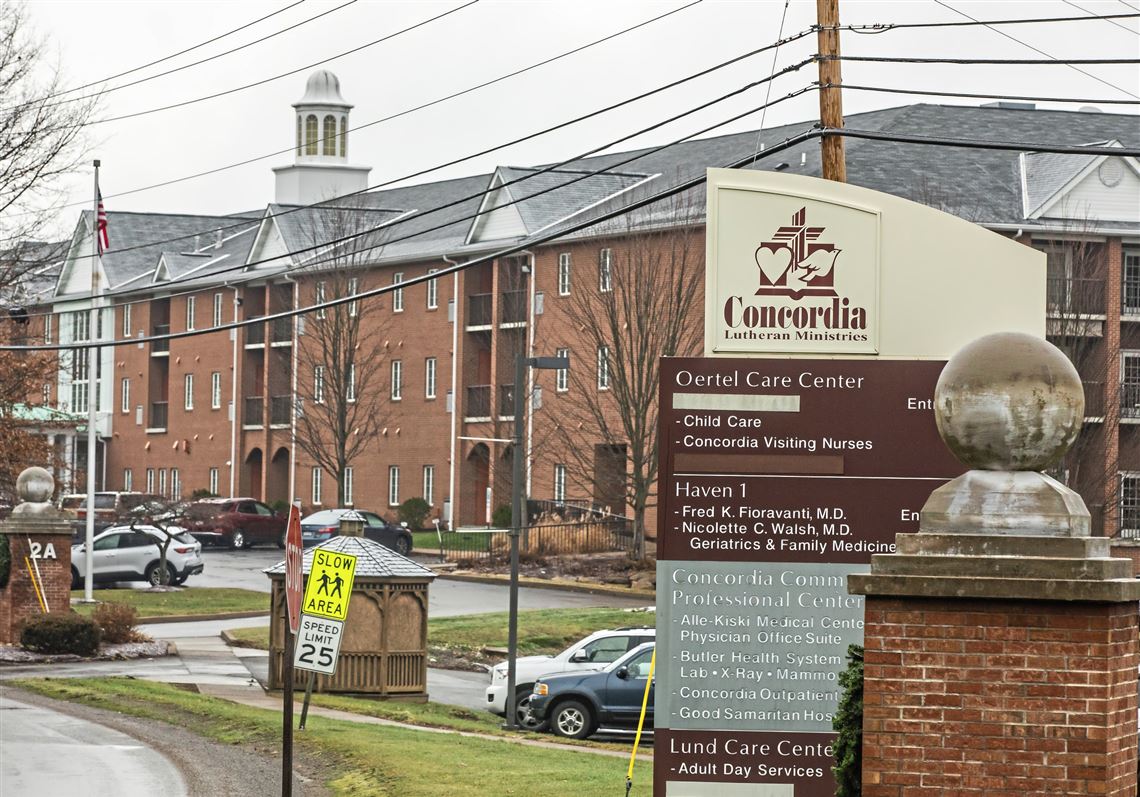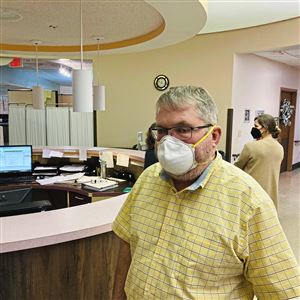Spiraling inflation and flat Medicaid reimbursement levels are staggering Pennsylvania’s 700 nursing homes, with one Butler County operator predicting that a third of the facilities could be pushed out of business by the crisis.
“In 39 years, this is the worst staff crisis I’ve seen, the worst economic crisis,” said Keith Frndak, president and CEO of Concordia Lutheran Ministries, a Butler County-based long-term care provider that employs 3,100. “This trend cannot continue.”
U.S. inflation hit 8.6% in May, the fastest pace in 41 years, with the retail price of gasoline jumping 61% as of Tuesday compared to a year ago. Everybody is feeling the pain of higher food and energy prices.
But nursing home operators say the sting is worse in their industry because reimbursement for a rising number of patients doesn’t cover costs and has been flat for eight years.
Moreover, they are hard pressed for ways to pass along the higher costs.
More than 80,000 seniors live in Pennsylvania nursing homes — about twice the population of the Pittsburgh suburb of Penn Hills, according to the state Department of Health.
But one-third of those nursing homes could be forced out of business by the current crisis, Mr. Frndak predicted.
New studies by the Pennsylvania Health Care Association, a Harrisburg-based advocacy group, found an increasing number of nursing home residents relying on Medicaid health insurance to cover their stays — up 6% in five years to 74% of residents in 2020.
One problem, according to PHCA, is that Medicaid paid nursing homes an average $199.96 per day for care, while the average daily cost of providing the care was $247.62 in 2021 — a daily loss of $47.66.
A study done in February by Lancaster-based accounting firm RKL LLP for senior advocacy group LeadAge of Harrisburg put the daily Medicaid loss to nursing homes even higher: $86.26, up from $47.85 in 2019.
For every Medicaid nursing patient, Concordia loses $85 to $100 a day because of inadequate state reimbursement, Mr. Frndak said.
But the state Department of Human Services defended the payments to nursing homes in a statement Thursday, saying reimbursement rates are negotiated between managed care organizations and skilled care facilities, with no involvement by the state. Moreover, nursing homes are given the opportunity to increase payments by implementing various quality of care initiatives.
Nevertheless, PHCA found that 75% of nursing homes were operating in the red, while overall inflation for the facilities had risen 8.5%, including 8.8% for food and 13.5% for energy services.
Medicaid is a health care insurance for doctors, hospitals and nursing homes, paid for by the state and federal government, for people with low incomes or disabilities. Medicare is health insurance for people over 65.
Despite a popular misconception, Medicare only covers a month of nursing home care after a hospital stay.
The result of inadequate reimbursement is nursing homes are closing beds, turning away Medicaid residents and creating wait lists for admission, forcing families to drive farther to find long-term care for a loved one, experts say.
Inadequate Medicaid reimbursement was cited in Tuesday’s announcement that Philadelphia Nursing Home will close by year’s end, forcing 268 residents to move. Low Medicaid payments were also cited in the closing of the 92-bed Charles Morris Home in Squirrel Hill in 2020, a facility that traced its history back more than 100 years.
Since the start of the COVID-19 pandemic, 14 nursing homes have closed in Pennsylvania, according to PHCA.
“The question is, ‘Where do these folks go to get the care they need?’” PHCA President and CEO Zach Shamberg said. “We’re shouting the alarm.”
PHCA is among the groups lobbying for higher reimbursement from Gov. Tom Wolf as state budget negotiations enter the final weeks. Inadequate Medicaid reimbursement leaves few options for nursing home operators to balance the books, they say, which include raising rates for the small group of people who pay in cash.
In September, the American Health Care Association, a Washington, D.C.-based advocacy group, said 58% of nursing homes were limiting admissions due to staffing shortages. Some facilities are simply closing units because they can’t afford high-cost staffing agency help.
Labor costs are at the core of the crisis, with COVID-19-related pressures thinning the U.S. nursing home workforce by 15% to 1.35 million in November 2021 from 1.58 million in March 2020, according to the federal Bureau of Labor Statistics.
Wages, burnout and COVID-19 safety concerns were the top reasons for leaving long-term care, a PHCA September survey found.
At Quality Life Services Inc., a Butler-based outfit that operates 10 nursing homes and other senior care businesses, COVID-19 cut the workforce by one-third to 1,300 since the start of the pandemic.
Those who left included seven Quality Life employees at a 48-bed facility in Mercer County, all of whom caught COVID-19 during a July 2020 outbreak and simply walked off the job after learning they were infected.
Some Quality Life employees left for staffing agency work, where they could earn up to 20% more an hour; others left for Walmart, Target and other employers that boosted wages to attract employees, said Quality Life chief administrative officer Susie Tack Beardsley. The company responded by bumping up shift differentials to attract new employees.
For its part, Concordia Lutheran Ministries has had similar issues but declined to hired temporary agency staff as a matter of policy, believing that employees provide more consistent and compassionate care, Mr. Frndak said. To keep workers, Concordia boosted wages by 18% to 20% in the past two years — increases that are not sustainable.
Concordia’s natural gas costs alone jumped 40% in the past year, he said, and the cost of electricity has also risen.
“Crazy numbers,” Mr. Frndak said. “It’s hard.”
In addition to increasing shift differentials, Quality Life Services uses temporary agency staffing to fill shifts, CEO Steve Tack said. But private agency staffing comes at a price: For a nurse aide, the agency cost is twice as much as an employee aide, he said.
“The inability to have enough staff has limited how many patients we can take care of,” Mr. Tack said. “That means you’re going to have a crisis.”
Correction at 1:51 p.m. June 20: The last increase in Medicaid nursing home reimbursement was 2014.
Kris B. Mamula: kmamula@post-gazette.com or 412-263-1699.
First Published: June 20, 2022, 10:00 a.m.





















